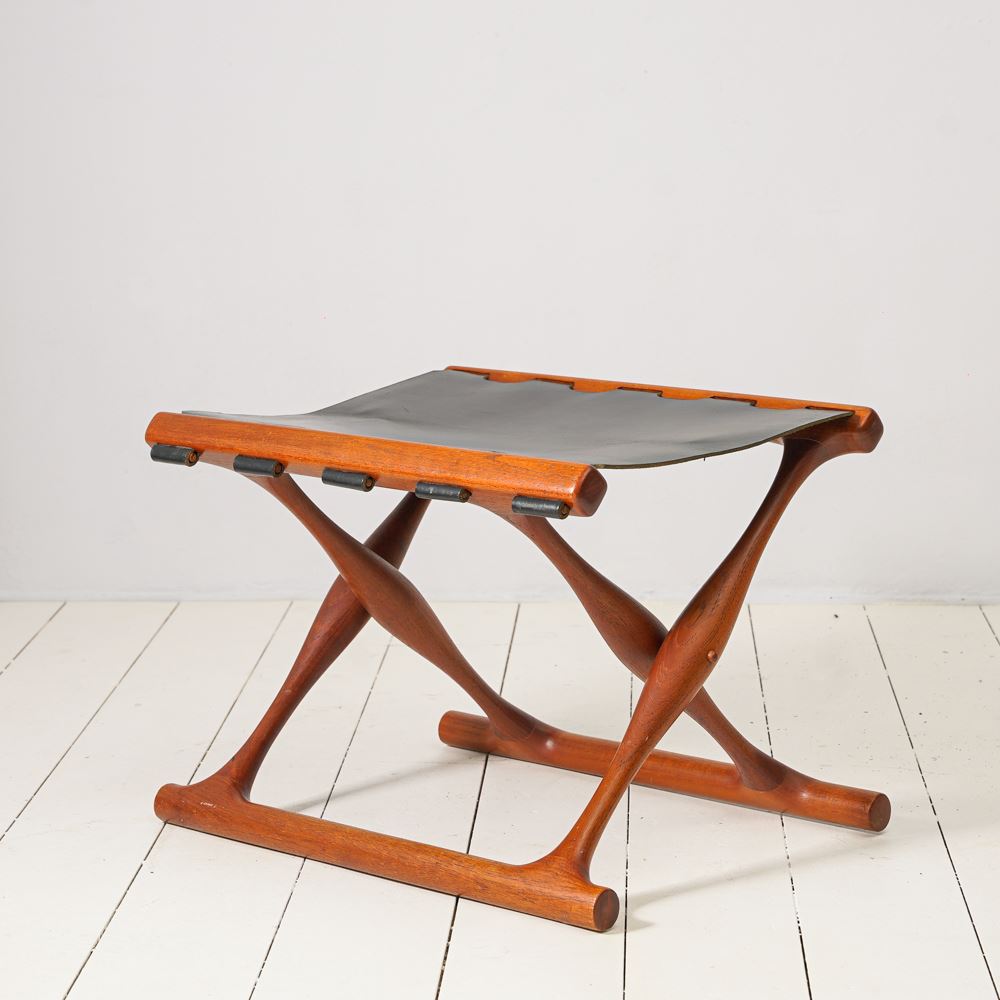
PH43 Guldhøj 折凳
設計師 | 波爾·洪德瓦德 (丹麥)
設計時間 | 1958
品牌 | 波爾·洪德瓦德 (丹麥)
規格 | 寬48 x 深40 x 高35公分
材質 | 柚木.黑色皮革
PH43 Guldhøj Stool
DESIGNER.Poul Hundevad (Denmark)
DESIGNED.1958
MANUFACTURER.Poul Hundevad (Denmark)
DIMENSIONS.W48 x D40 x H35cm
MATERIALS.Teak, black leather
Guldhøj 折凳的靈感來自丹麥在1891年於日德蘭半島(Jutland)地區Guldhøj 古墓中挖掘出的一張歐洲青銅時期約西元前1400年的折凳。這張古代凳子雖然皮革凳面已殘破,但木質結構依然保存完好,這使其成為現今已知最早的歐洲家具。該折凳目前收藏於丹麥國家博物館。
波爾·洪德瓦德(Poul Hundevad),一位受過專業訓練的木匠,在1958年根據這件考古遺物設計出現代版本的Guldhøj 折凳,以現代工藝重新詮釋這件青銅時期的經典設計。這款折凳成為洪德瓦德最受歡迎的作品之一,生產超過15,000張。
這款凳子的樣式和尺寸與同時期的埃及折凳相似,這可能是趨同演化的結果,也有人認為這種設計由商旅自古埃及傳入歐洲,反映了跨文化的影響與交流。
The Guldhoj Stool draws its inspiration from an archaeological discovery made in 1891 in Jutland, Denmark, at the ancient Guldhoj burial site (Gold Hill). This folding stool, dating back to around 1400 BCE during the European Bronze Age, was remarkably preserved, with the wooden structure remaining intact despite the deterioration of its leather seat. It is considered the earliest known piece of European furniture and is currently housed at the National Museum of Denmark.
In 1960, skilled Danish carpenter Poul Hundevad reimagined this ancient design, creating a modern version of the Guldhoj Stool. Hundevad's interpretation combined modern craftsmanship with the timeless simplicity of the original Bronze Age folding stool. His design became one of his most popular works, with over 15,000 units produced.
The Guldhoj Stool shares similarities in style and dimensions with contemporary Egyptian folding stools, suggesting either convergent evolution or the possibility that this design spread from ancient Egypt to Europe through trade routes. This highlights the stool's significance as a reflection of cross-cultural influence in ancient times."